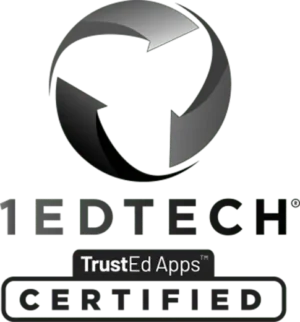

Brandy Alexander, elementary instructional specialist in the Houston, TX area, promotes Bitmojis as a way to build relationships while creating a fun environment with your colleagues and school.
Only have a few minutes? Watch Brandy talk about the major takeaways from her article. Then come back later to read the full thing!
I
t’s no surprise that being new on campus has its uphill battles. Bitmojis are one unique way I’ve found to help ease any tension and accelerate the creation of a supportive, fun coaching environment with your peers. These personalized cartoons can fit into many areas of your work with teachers and administrators. Plus, they’re easily accessible in either free mobile app or Google Chrome extension to instantly add a personalized touch to any document or email you’re working in.

Why Bitmojis?
Often in coaching we’re asking teachers to reflect, attend additional professional development, study content or instructional practices, make changes, and even have difficult conversations about falling student performance and areas of improvement. Bitmojis allow me to communicate with my teams while creating a positive environment through even the most difficult of conversations. Teaching can be very challenging and reading emails isn’t as exciting as it was 10 years ago; slipping a small, fun graphic into an email to my colleague can not only show them that I value their work as a partner but help take any edge off as well.
My Favorites Uses
Stickers
Who goes into education and doesn’t love getting and giving stickers? In fact, I’ve heard from more than one high school teacher that their students still love them! I use the Chrome extension to print my Bitmoji onto sticky labels so I can easily place fun Bitmojis anywhere and everywhere. I’ve given out these stickers for teachers to wear on their shirts after telling their students how amazing they are and have even put them on paperwork I’ve handed back (e.g., copies of their data, their report card printouts, copies of certification paperwork, and more). This year, I started giving out stickers to students during our weekly celebrations, called “Bring It To Me, Friday,” where teachers send their students to the library to share celebratory work and so our administration team can cheer them on.
Some other great areas where you too can benefit from Bitmojis complimenting your coaching work are feedback notes, Twitter, and your emails.

Feedback Notes
I’ve noticed that many teachers in my building post notes they’ve received to celebrate or thank them for their dedication to our students. I make sure to stagger my critical feedback along with positive-only feedback to help create these feelings too. For instance, before leaving for our weekly break, I simply snagged a holiday Bitmoji and posted it in a Microsoft Word document. With a few copy/pastes and the help of the printer, I walked around to every teacher I work with and left them a quick personalized note about how thankful I am for a particular trait or skill they bring to the team.
In October, my coaching partner and I did the same thing by printing a festive Bitmoji and leaving some brownie “bats” out as they trick-or-treated around the school and I did the same before leaving for winter break and during our Polar Express Day. On my calendar, when we have a “fun day” for kids, I try to take that time to make sure the teachers know they are appreciated as well. Those days can be a doozy!
Pro Tip: You can also use various online sticky-note templates to print on for ease, and then stick them to teacher desks, display boards, outside mailboxes, etc.
When I first arrived on my current campus, I noticed there were lots of teachers who had the passion and drive to be influencers in our field, and I wanted a way to connect with them to support them in their professional goals. One of things that I recommend educators do first is join Twitter: the global network of educators on Twitter will definitely change your life if you let it and dig in. When I had a platform to share this resource on my campus, one of the first pushbacks I heard was that they didn’t want their pictures on social media. That’s when I began advocating for those who feel uneasy on social media to use their Bitmoji!
While in a conference session years ago, author and principal, Todd Nesloney, said that if you keep your Twitter profile picture as the grayed-out person, people are less likely to engage because “it just looks creepy.” He’s right! When you want to participate in a global online community, consider using your Bitmoji rather than a real picture. I’ve also encouraged my teachers to have their students create a Bitmoji through their student accounts so that they can post safely as well.
When I know tension is high on campus—from grading due dates, holiday activities, or testing season, for instance—I try my best to communicate my empathy for the hard work they’re doing. I’ve found that Bitmojis set a more positive tone in an email than simply typing a thank you or other affirmation. Just as important, I get more replies this way and more responses asking for help or support as well.
Creating a Culture of Bitmojis
I began using Bitmojis the first year I arrived on my current campus. This year multiple teachers asked me to come visit their rooms booming with Bitmojis! I’ve seen teacher Bitmojis on their objectives board, welcoming students into the classroom, and one even had a t-shirt made with her Bitmoji and Twitter handle included. It’s exciting to see the positive environment these fun graphics have helped create. Plus, students love them too!
Creating a positive coaching environment can seem daunting at first, especially on a new campus. Going in with some strategies like Bitmojis can help communicate your openness and willingness to have fun and work alongside teachers to bring out the best in them and their teaching practices.
Wrapping Up
Bitmojis are more than just fun caricatures—they open the door to building stronger relationships with your teams and help them see that you’re personable, friendly, and can work hard while also enjoying the position. Once you begin using them you’ll also find many more ways to incorporate them into your day: they’ll seep into text messages and you’ll see them posted in classrooms, and that level of communication is helpful in teams working together. I wish you the best with building stronger and more collaborative relationships with your colleagues!
Watch Brandy’s video overview
{% video_player “embed_player” overrideable=False, type=’scriptV4′, hide_playlist=True, viral_sharing=False, embed_button=False, autoplay=False, hidden_controls=False, loop=False, muted=False, width=’1920′, height=’1080′, player_id=’26408808038′, style=” %}
About our Guest Blogger
Brandy Alexander is an elementary instructional specialist in the Houston area. Previously, she taught second and third grade for seven years, and worked in the education policy field. Brandy has her bachelor’s degree at the University of North Texas and a Master of Education Administration from the University of Texas at Austin. Outside of her daily job, she presents workshop sessions at national and state conferences, and serves as a board member for the West Houston Area Council of Texas of English.
Follow her on Twitter at @ReaderLeaderBSA
{{cta(‘352a410e-db79-4f33-a482-d301e8041965′,’justifycenter’)}}
Stay Connected
News, articles, and tips for meeting your district’s goals—delivered to your inbox.




















